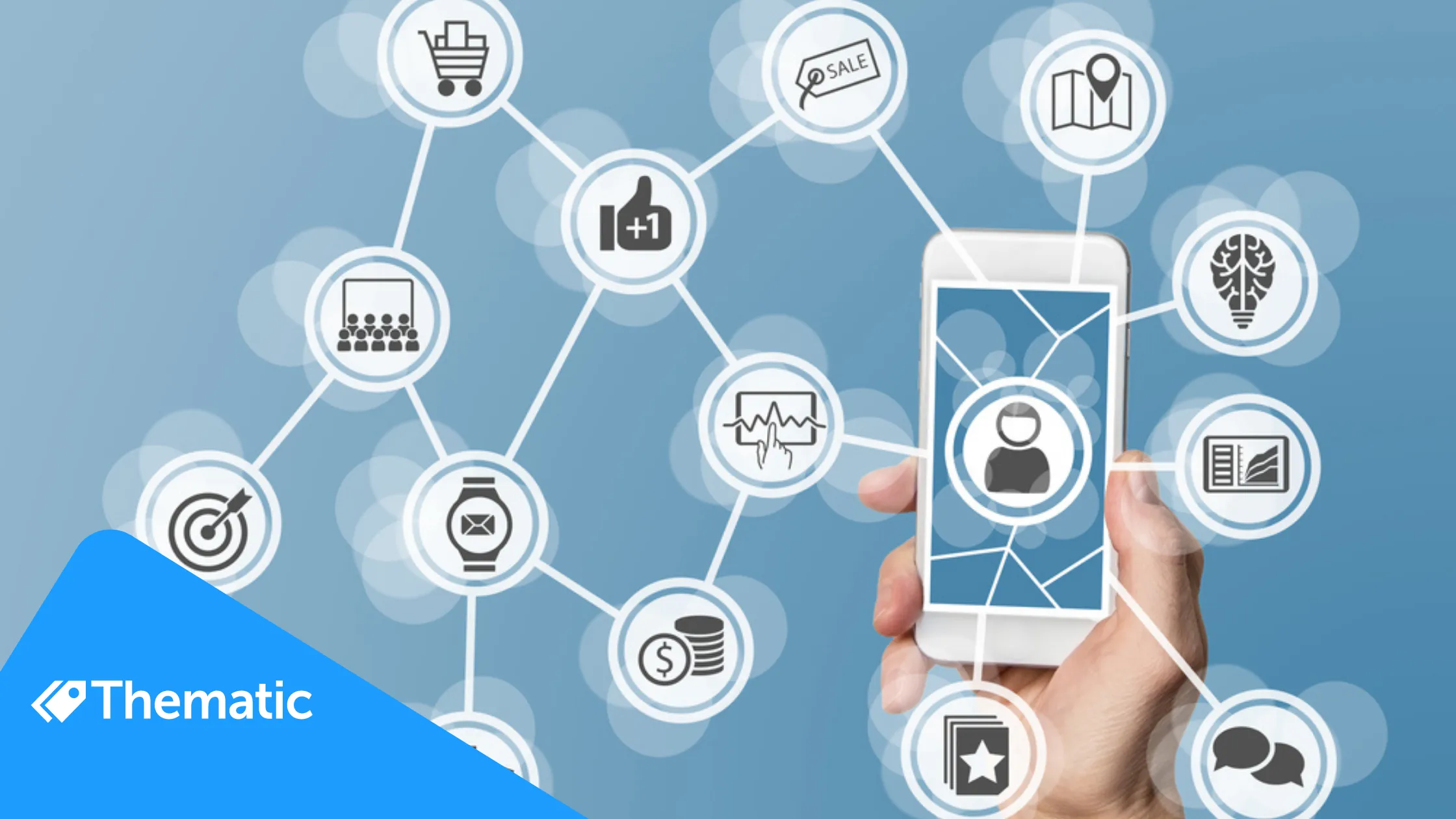
Customer intelligence is crucial to building better products and experiences. It's the system of collecting and analyzing customer data to access the deep understanding and actionable insights your product team need.

It’s time to refine your product roadmap for the coming year. You and your team have spent ages on market research, doing everything you can to ensure success.
More than just releasing new features, you want to deliver something that really helps your customers, and meets an existing need. Beyond that, you want to provide a personalized product experience, so your customers feel your product is made just for them. You’ve got a customer data platform (CDP) set up, and you’re hopeful this will do the trick.
But now one of your stakeholders has sent over an industry report showing that a product launch is more successful when the product team applies customer intelligence. You’re already speaking with customers, so what is it about customer intelligence that delivers a successful product?
What is customer intelligence, why is it so effective, and how can you integrate it into your product team processes?
Customer intelligence (CI) is a system of collecting and analyzing customer data to get insight into building better products and all-round product experiences.
Customers share information about themselves every time they interact with a product or brand: the answers on how to create and improve the product experience are right there, mixed in with lots of general noise and chatter. Effective CI scoops up this data, analyzes and organizes it to provide a full picture of the customer journey.
This framework is key. Keep in mind that CI isn’t just the information collected - it’s a feedback loop that builds up over time, leading to rich, in-depth customer understanding.
The quickest and most effective place to start is to pull data and context from wherever your customers are sharing product feedback:
Once you have your raw data, you need to aggregate and organize the information in a way that is easy to analyze, so that the insights you’re after are accessible.
It’s important to collect data at every touchpoint, following customers as they interact with your product and your overall brand. This way you’ll ensure an almost three-dimensional understanding of their preferences, likes and dislikes.
With a customer intelligence system in place, product teams can focus on features and issues that customers actually care about. This in turn builds ARR and reduces churn. Ideally, customer intelligence should include revenue and usage metric analysis that show the product is delivering value - not just what customers say.

Customer intelligence is the process of whole-customer data analysis. Customer insights emerge from customer intelligence: the deep understanding and actionable insights that product teams' dreams are made of. It’s the insights that enable you to create an optimized product experience for each of your customers – and, taking it further, to each of your customer segments.
For instance, suppose you run an online fitness platform that sells shoes and other running gear. Your CDP tells you that Audrey, a repeat customer, buys shoes every quarter and prefers bright neon colors.
Her glowing review on a pair of running shoes gave you valuable information on her marathon-running lifestyle. A one-star review on another pair tells you that lightness is a key attribute she looks for. Making the best use of your CDP, you can leverage this feedback and tailor Audrey’s product experience; an appropriate sales EDM could include a lineup of bright colored, ultra-light running shoes, with the suggestion that a particular pair is designed for marathon runners.
It’s when you bring customer segmentation analysis into the mix that customer intelligence (and the resulting insights) becomes really powerful. With customer segmentation, you can divide your user base by demographics, personal preferences, or lifestyle. You’ll find yourself able to look not only at the individual, or the sum total of all your customers, but at specific user groups that share a common thread.
Now your customer insights can power data-driven decisions that improve the product experience for an entire customer segment. You’ll also be able to validate product road maps for new and existing products, backing up your choices with clear evidence of market demand from customers with similar attributes.
Note: Depending on your product type, or your tech stack, you might not capture identifying information about your customers. Your user data and reviews may be anonymous, with limited demographics. That’s absolutely fine - customer intelligence isn’t intended to be a creepy or stalker-like tool!
Whether you hold anonymised or identifiable data about your customers, you’re looking for patterns in the data that highlight pain points and opportunities. Making improvements based on this data means happier customers and boosts sales: it’s a win-win!
So why does your company, and your product team, need customer intelligence?
Simply put: there’s no one size fits all. Improving your product experience can increase customer satisfaction. It can improve customer loyalty and raise revenue. Customers love to feel heard, and they appreciate virtual experiences that reflect who they are and what they care about.
When your product development team is powered by customer intelligence, you don’t have to guess at what different users might appreciate. You have real-time insights from real-life consumers to guide your decision making.
This is a big topic, and we can only begin to explore it here. In short, though, your company needs customer intelligence because:
As we’ve outlined above, to supercharge your customer intelligence you need to gather data at every touchpoint along the customer journey. This allows you to form a full, omnichannel view of the product experience from the customer’s standpoint. There are four main types of intelligence to consider:
Depending on your product, some types of intelligence will be easier to collect than others. The best sources of customer intelligence are unsolicited: free-form reviews, chat logs and support requests. These may not be as easily digested as a survey, but an AI-powered customer intelligence platform can draw powerful themes from all these sources.
Taken individually, these provide a single customer view that allows us to increase engagement through targeted advertisement and customer engagement. Taken as a whole, these data points tell us about our product, where our strengths lie and where we’re falling short. They can be filtered for a specific demographic and power marketing automation as well as market research.

A customer intelligence platform is similar to but not synonymous with customer relationship management software (CRM). While a CRM focuses on the interactions between your customers and the sales and support team, a customer intelligence platform looks at the big picture. It provides in depth analysis of trends, themes, and pain points.
Some examples:
AI-based customer analytics turn out to be invaluable when it comes to customer care. Thematic users have been able to double user growth, reduce call center volume, and streamline the product experience at all levels.
Getting started with customer intelligence doesn’t have to be difficult. Your users are already providing you with real-time data, day in and day out. What you need to do is to analyze this data and turn it into customer intelligence and insights for your product team. Here are three key steps to consider:
a) Use a customer intelligence or feedback analytics platform that aggregates your data for you, and you’ll get full value from your feedback.
b) Organizing data becomes automatic if you have a platform like Thematic.
3. Run your analysis to discover which themes customers talk about most, and what’s mentioned when they’re disappointed or delighted. Knowing this, you’ll be able to start identifying the customer insights that’ll help you build a better product experience.
From then on, you’ll make product decisions with confidence. With a great analytics platform on your side, you’ll discover deep contextual insights, use feedback loops to iterate and refine product features, and celebrate customer growth.
Everyone used to get along without customer intelligence, and you can too. But you do need to be aware that you won’t be able to craft the data-driven product experience you might have had otherwise, and it’ll be that much harder for you than it is for your competition.
Here’s what you can expect if you decide to skip customer intelligence:
It’s impossible to deliver a better product when you don’t understand the pain points your customers are dealing with. You’ve got some customer feedback, but open-ended reviews or support logs are only useful if you can organize and analyze them. You can choose to allocate analyst time and effort into reviewing the data - a seemingly endless task without an automated solution. Ever tried reading through 5,679 user reviews? It’s a quick way to make you feel lost.
Keen to find out how a feedback analytics platform like Thematic can revolutionize your customer intelligence and insights to deliver better products?
Book a personalized demo to see how you can take customer-centric to the next level, and get customer intelligence working for you.
You can find out more about analyzing customer feedback in these guides:
We also have some free feedback tools and resources that may help you:
Join the newsletter to receive the latest updates in your inbox.